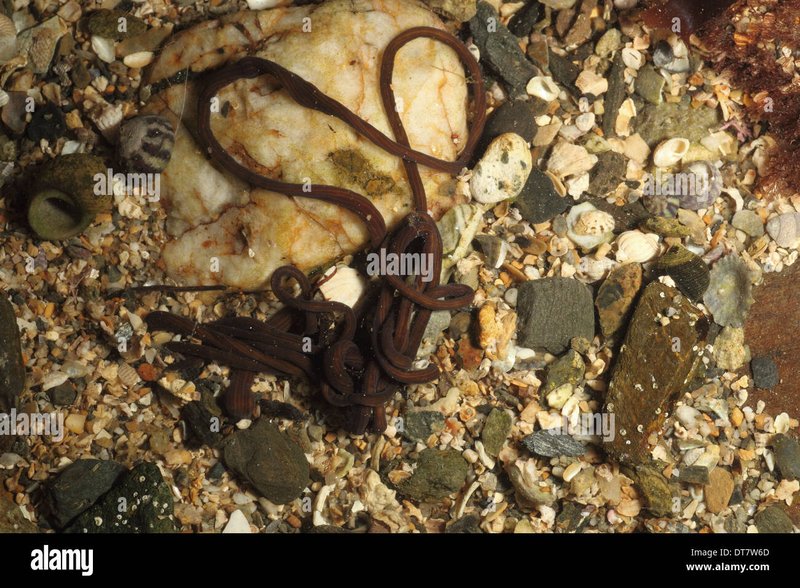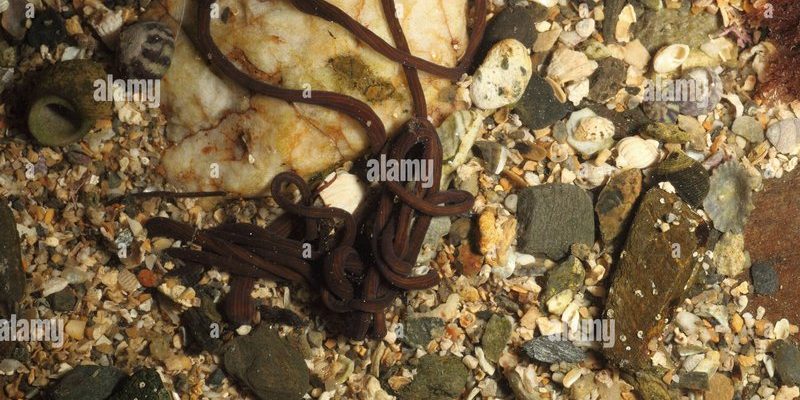
Bootlace worms, scientifically known as *Lineus longissimus*, are among the longest animals on the planet, reaching up to 55 meters in length! To survive in intertidal zones, where they often experience drastic changes in their environment, these worms have adapted profoundly. They face the challenge of desiccation, or drying out, when the tide recedes. In this article, we’ll explore how they manage to thrive despite these challenges, focusing on their unique biology and behavior.
Understanding Desiccation and Its Impact on Marine Life
You might wonder why desiccation is such a big deal for marine creatures. Desiccation occurs when organisms lose moisture faster than they can replace it. For many sea animals, especially those like bootlace worms that live in tidal zones, this can be a matter of life and death. Low tide exposes them to air, which can quickly dry them out.
Think of it this way: if you’ve ever left a sponge out to dry, you know it becomes hard and brittle without water. Similarly, if bootlace worms don’t manage their moisture levels, they risk becoming too dry to survive. So, how do these remarkable creatures tackle such a challenge in their everyday lives?
Behavioral Adaptations of Bootlace Worms
Bootlace worms use some clever behavioral strategies to combat desiccation. When the tide is low, they tend to burrow into the soft sediment where moisture is retained. By digging down, they can escape the direct exposure to air and create a temporary refuge that keeps them moist.
Additionally, these worms are known to adjust their orientation in the substrate. When they sense that the tide is going down, they will often reposition themselves in a way that further minimizes moisture loss. Imagine curling up in a cozy blanket during a cold night—the worm’s behavior mimics that comfort, providing a humidity-retaining environment to stave off dryness.
Moreover, bootlace worms are also opportunistic feeders. They take advantage of the high tide to feed on plankton and detritus, gathering important nutrients. This strategy enhances their energy stores while the water is abundant, so when the tide rolls out, they have enough energy to endure till it returns.
Physiological Mechanisms for Water Retention
Beyond behavioral adjustments, bootlace worms have fascinating physiological traits to help them retain moisture. Their bodies are covered in a protective mucous layer. This slime acts like a barrier, slowing down moisture loss and providing a shield against harsh environmental conditions.
The body structure of bootlace worms also plays a role. These worms have a high surface area-to-volume ratio, allowing them to absorb moisture more efficiently when they are submerged. When they are caught in the dryer air of low tide, their moisture retention abilities kick in.
You can think of this mucous layer like our skin, which protects us from losing too much water. Without it, just like how we’d feel parched, bootlace worms would risk dehydration quickly during low tide.
The Role of Environment in Survival
Bootlace worms thrive in specific environments that allow them to avoid desiccation effectively. They are primarily found in intertidal mudflats where the sediment is rich and wet. This environment is crucial because it allows them to dig and stay moist during low tide.
The presence of certain organic materials in the mud can also aid their survival. These materials can hold water better than pure sand, providing a more stable habitat. If you’ve ever walked on a mudflat, you know it can be squishy and soft, an environment that bootlace worms utilize to their advantage.
However, changes in their environment, such as climate conditions or pollution, could threaten their delicate survival tactics. It’s essential to consider how preserving their habitat is crucial not just for bootlace worms, but for the entire ecosystem they support.
Comparing Bootlace Worms with Other Marine Species
When you look at bootlace worms, it’s interesting to compare them with other marine species that have adapted to similar challenges. For instance, sea stars and crabs are also known for their resilience during low tide. However, they cope with desiccation differently.
While bootlace worms burrow into the mud, sea stars often cling to rocks or other stable surfaces where they are less likely to dry out. Crabs, on the other hand, can retreat into their shells or burrows to keep themselves moist. It’s fascinating how different creatures have developed unique solutions to the same problem.
Observing these contrasts highlights how evolution shapes behavior and physiology. It’s a reminder that nature is full of creativity when it comes to survival strategies.
Conservation and the Future of Bootlace Worms
With their unique adaptations, bootlace worms might seem indestructible, but they face threats that could limit their populations. Coastal development, pollution, and climate change can significantly affect their environments.
If their habitats become compromised, it could lead to higher risks of desiccation and reduced capacity to thrive. Conservation efforts focusing on protecting intertidal zones are vital. These regions are not only crucial for bootlace worms but also support diverse marine life.
As we work towards a more sustainable future, understanding creatures like the bootlace worm can inspire us to protect our precious ecosystems. They remind us how interconnected we all are in the tapestry of life.
In Conclusion
Bootlace worms are a remarkable example of resilience in the face of environmental challenges. Their ability to avoid desiccation at low tide showcases the wonders of evolution and adaptation. From clever behaviors to unique physiological traits, these worms remind us of nature’s ingenuity.
As we become more aware of the impact that human activities have on marine ecosystems, let’s take a moment to appreciate these fascinating creatures. Every little effort to protect their habitat can make a significant difference. Who knows? The next time you’re at the beach during low tide, you just might take a closer look at the mudflats and appreciate the hidden world of bootlace worms thriving beneath the surface.

